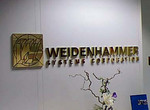
That’s according to Ralf Weidenhammer, managing director of packaging company Weidenhammer.
The trend lay behind the recent roll out of an oval-shaped composite can by the business, Weidenhammer told FoodProductionDaily.com at the FachPack 2012 trade show in Nuremberg, Germany.
“We are just presenting this now to a number of customers,” said Weidenhammer.
Growth in processing
He expected the new design to become popular quickly, prompting growth in processing capacity. “At the moment we only have one production line in Hockenheim.”
He cited one example where a customer had approached Weidenhammer to pitch designs to them for packaging that needed to be ready by March 31 this year. Weidenhammer had presented the oval composite can concept, but warned it would only be ready two months later than the deadline.
On that basis, the customer’s purchasing department had told Weidenhammer it would be ruled out of the pitch.
However, after a discussion between the client’s purchasing and marketing departments, the former contacted Weidenhammer again to say it liked the design so much, it was prepared to delay product launch.
Wider range
Current composite can technology limited the number of shapes that could be created, but In Mould Labelling (IML), one of Weidenhammer’s specialities, made a much wider range possible, he said.
“The shape issue is one of the key things customers are coming to us about with IML. It’s a decision-maker, but more on IML than on composite cans.”
IML was much more flexible, offering manufacturers the ability to flex the size of packs up and down for ‘x% extra’ promotions with minimal fuss, he said.
By contrast, composite can designs were much more fixed at one size, said Weidenhammer.





